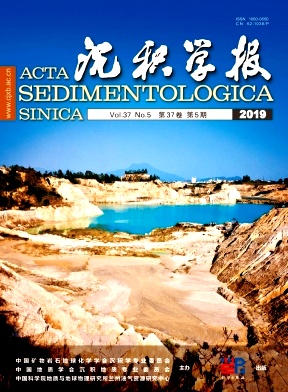Differential Diagenesis of Delta Plain Sandstone and Its Control on Reservoir Classification: A case study on Yan'an Formation in Yinjiacheng area,southwestern Ordos Basin
doi: 10.14027/j.issn.1000-0550.2018.182
- Received Date: 2018-05-11
- Rev Recd Date: 2018-11-19
- Publish Date: 2019-10-10
-
Key words:
- differential diagenesis /
- pore evolution /
- reservoir classification /
- Yan'an Formation /
- Ordos Basin
Abstract: Diagenesis directly affects the pore evolution of reservoirs and controls the physical properties and oil content of reservoirs. It is of great significance to clarify the differential diagenesis of reservoirs and the sequence of hydrocarbon charging. Several techniques were used to study the sandstone reservoir rocks of the delta plain subfacies in the Yan' an Fm (J1y) in the Yinjiacheng-Hedao area:observation of cores and thin-section optical microscopy, XRD, fluorescence, physical properties, mercury injection, and other testing methods. The study has shown that the differences in the original sedimentary features and diagenetic fluids are the main reasons for the differences in reservoir diagenesis. There is good correspondence between diagenetic facies, reservoir types and oil production.Medium-tocoarse-grained sandstones in distributary channel sedimentary microfacies have large initial porosity, strong acid dissolution, well-developed grain mold pores and throats, and good pore-throat connectivity. The porosity range is 11%18% and the permeability range is (20-1 000)×10-3 μm2. Displacement pressure fluctuates between 0.02 MPa and 0.1 MPa, and the median pressure ranges from 0.04 MPa to 1.3 MPa. The median radius range is 16-27.1 μm. This develops large pores and throats and results in medium-porosity and medium-to-high permeability reservoirs. This type of reservoir rock has undergone phases 1, 2 and 3 hydrocarbon charging, which produces industrial-grade oil flow and is classified as a Type I reservoir.The diagenetic evolution of medium-to-fine sandstone in distributary channel sedimentary microfacies is relatively slow and homogeneous. Acid dissolution produces a large number of dispersed dissolution pores but the connectivity is poor and therefore its permeability is low. This is its main difference from a Type I reservoir with similar porosity. The porosity range is 11%-17% and the permeability range is (3-60)×10-3 μm2. The displacement pressure fluctuates between 0.03 MPa and 0.41 MPa, and the median pressure ranges from 0.1 MPa to 2.0 MPa. The median radius is 0.8-7.2 μm. Small-to-mesopores and throats are developed, forming medium-porosity and medium to low permeability reservoirs. This type of reservoir rock has undergone phases 1, 2 and 3 hydrocarbon charging, and has low oil flow. It is classified as a Type Ⅱ reservoir.Pelitic fine siltstone in natural levee sedimentary microfacies is strongly compacted, which is the main cause of the small pore size. It is characterized by the bending deformation of mica. This type of reservoir has a porosity from 5% to 13% and a permeability from (0.05-3)×10-3 μm2. The displacement pressure fluctuates between 0.4 MPa and 0.9 MPa; median pressure ranges from 2 MPa to 5 MPa. The median radius ranges from 0.4 μm to 1.3 μm. Such reservoirs are low-porosity and extra-low-permeability reservoirs, or ‘tight’ reservoirs. Depending to the calcite content, this kind of reservoir may be further divided into two types. One kind has no obvious calcite cementation, and because it develops extra-small pore throats, it is regarded as a low-porosity and extra-low-permeability reservoir. This kind of reservoir has undergone stages 1 and 2 hydrocarbon charging, which has high water production. The other kind has developed both strong compaction and a large amount of calcite cementation. This kind has no hydrocarbon display, and is regarded as a ‘dense’ or ‘invalid’ reservoir. This kind of reservoir is a ‘dry layer’. Both of these are classified as Type Ⅲ reservoirs.Strong relationships were found between the spatial distribution of the different reservoir rock types and the oil yields of individual wells, so it is suggested that this study provides theoretical support for the prediction of further productive reservoirs.
| Citation: | PAN Xing, WANG HaiHong, WANG ZhenLiang, LIU YiCang, GAO XuHui, WANG LianGuo, XIAO ShengDong. Differential Diagenesis of Delta Plain Sandstone and Its Control on Reservoir Classification: A case study on Yan'an Formation in Yinjiacheng area,southwestern Ordos Basin[J]. Acta Sedimentologica Sinica, 2019, 37(5): 1031-1043. doi: 10.14027/j.issn.1000-0550.2018.182 |






 DownLoad:
DownLoad: